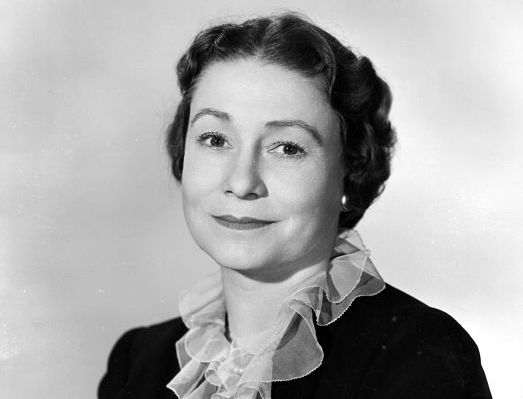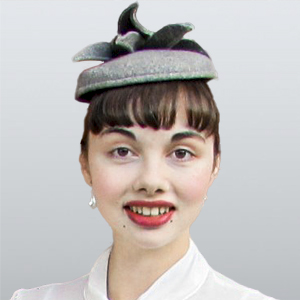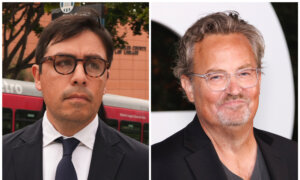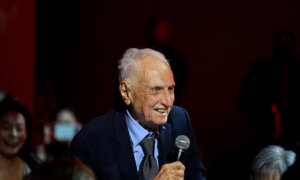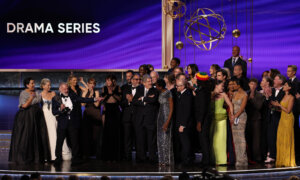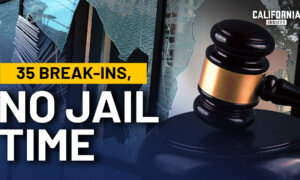Commentary
The difference between classic Hollywood and current Hollywood could be summed up by one concept: respect for the sanctity of traditional marriage. There are a lot of problems in modern films, but they all stem from disrespect for God’s plan for the family. That leads to all sorts of immorality, immodesty, disrespect, and obscenity. This moral corruption has spread to television, advertising, and the internet. It’s a breath of fresh air to watch movies made during the Golden Era of Hollywood, which were held to high standards of morality.
Today’s Moment of Movie Wisdom is from “The Model and the Marriage Broker” (1951). The scene in question takes place 38 minutes into this 103-minute movie. A middle-aged woman (Thelma Ritter) accidentally makes friends with a younger woman (Jeanne Crain) who has just found out that the man with whom she is involved is married. The older woman tells her new young friend a hypothetical situation about what happens to a woman when her husband leaves her, and we gradually realize that she’s talking about her own experiences. The young woman realizes the truth about her dishonest suitor.
Mae Swasey (Ritter) runs a marriage brokerage in New York City, but she’s racking up debt and never has enough male prospects to match with her female clients. She doesn’t always tell the potential spouses about the nature of her business, as in the case of X-ray technician Matt Hornbeck (Scott Brady). After Matt leaves Ina Kuschner (Shirley Mills) at the altar, Mrs. Swasey confesses to him that she set up the match for the Kuschners, who were her clients.
Mae then accidentally switches purses with a beautiful young model, Kitty Bennett (Crain), and ends up reading a letter to Kitty from her suitor, which reveals that he is married. When Kitty comes to exchange purses, Mrs. Swasey confesses that she read the letter and urges the younger woman to end the dangerous relationship. At first, Kitty is angry about the invasion of privacy, but she later visits Mrs. Swasey’s apartment to apologize. Mae convinces Kitty to spend the night with her to avoid seeing the troublesome man, and the two become friends. Mrs. Swasey is determined to help Kitty find a suitable potential husband, so she finds a sneaky way to introduce her to Matt. However, Kitty still doesn’t know that Mae is a marriage broker.

A screenshot of the trailer for “The Model and the Marriage Broker” from 1951. (Public Domain)
The Scene
Kitty comes over to Mrs. Swasey’s apartment on a rainy Sunday afternoon to apologize for snapping at her about the letter in her purse. This leads to an honest conversation between the two women. Kitty tells Mae that she’ll be glad to know that the man who wrote the letter is getting a divorce so he can marry her. Kitty argues that he and his wife weren’t getting along long before she entered the picture. From Mae’s face, it’s obvious that she doesn’t approve of this development one bit, but she plays along.
Mae says that it’s good that Kitty wasn’t the reason for their breaking up, so she won’t have another woman’s unhappiness on her conscience. Also, it’s never good to be in a situation where a man can say, “You’re the dame that broke up my home.” Her subtle but meaningful statements provoke Kitty to muse that it must be horrible for a woman when her husband leaves her. Mae says that it isn’t so bad, but she describes the details of how someone feels in that situation. It becomes clear that she’s talking from personal experience, since we learn that her husband left her for another woman many years ago.
Its Significance
This scene is a real turning point for Kitty. When we first meet this character, she is very defensive and quick-tempered, but we later realize that this is because she knows she’s doing the wrong thing by even considering a relationship with a married man. Mae’s practical words make a big impact on her, and she eventually realizes that Mrs. Swasey was right to try to break it up. This is just the beginning of Mae’s attempts to help Kitty find the right young man, who’ll be free to marry her without the baggage of divorce. She doesn’t purposely hide her profession from Kitty, but she also doesn’t make a point to tell her that she’s a marriage broker. When Kitty finds out the truth, she is again angry with Mrs. Swasey for meddling in her life, but she later realizes why Mae does what she does.

A screenshot of the trailer for “The Model and the Marriage Broker” from 1951. (Public Domain)
Mae Swasey certainly isn’t in the marriage brokerage business for profit. She barely earns enough commissions to keep the lights on in her office. She had to find a way to support herself after her husband left her, so she was motivated by her personal experience. She was very lonely, so she figured out how she could make a business out of helping other lonely people find companionship and contentment in marriage. This scene is the first glimpse into Mae’s personal life. Before that, we hear her called Mrs. Swasey, but we don’t know what happened to her husband. Her advice to Kitty is very personal, since she is speaking as a wronged wife. However, she doesn’t blame Kitty; she just wants her to avoid making a mistake like that.
Following the Code
An all-too-popular motto today is “follow your heart.” No matter the cost, the most important thing is pursuing your personal happiness. Popular entertainment has pushed this narrative for years, and it’s now more common than ever in self-help guides and advice columns. The flaw in this idea is that it places one’s “personal truth” above any absolute truth, law of morality, or standard of good versus evil. The result is an absolutely lawless society, dedicated solely to the service of self and the pursuit of temporary pleasure.
Thankfully, movies like “The Model and the Marriage Broker” remind us of a time, not that long ago, when popular entertainment reflected society’s respect for moral standards of correct living. From 1934 to 1954, as long as the Production Code Administration strictly enforced the principles of decency detailed in the Motion Picture Production Code, American movies presented strong moral ethics. This movie reminds us that our lives have no chance of happiness when we break the basic laws of right and wrong.


